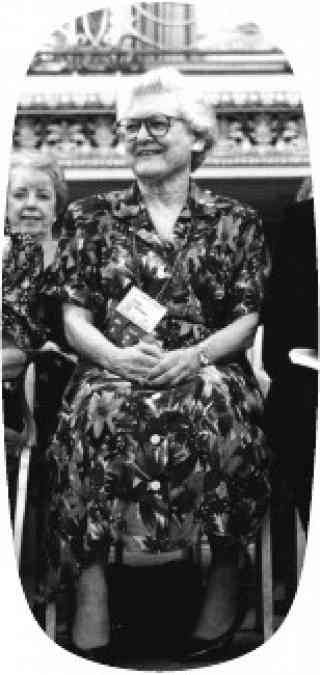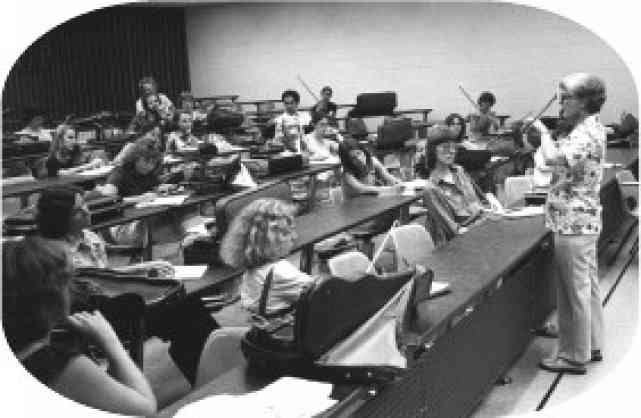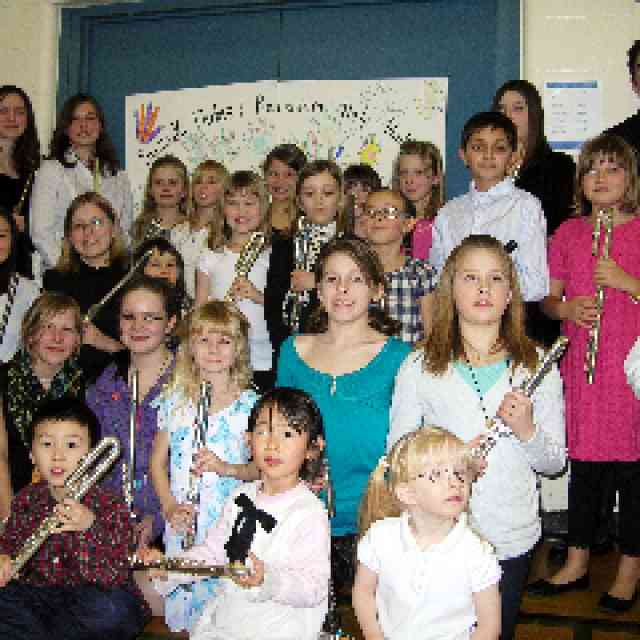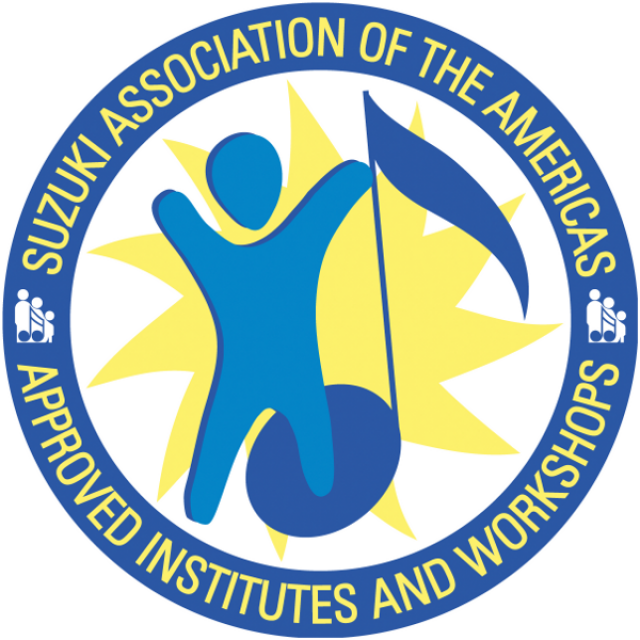
Evelyn Hermann
In October of 2009, the founder of the Suzuki Institute of Dallas, Dr. Evelyn Hermann, passed away. A short while before she died, she sent a tape of herself speaking about how SID was begun. I listened to it and have put together the story as a tribute to this great lady.
Dr. Evelyn Hermann attended the Cincinnati Conservatory of Music, and while she was there, the attack on Pearl Harbor occurred. That was on a Sunday, as everyone knows, and the very next day, all the boys at CCM enlisted in the military bands and orchestras. This happened at all the major music conservatories in America. Also, the young men from major orchestras enlisted as well, so women began performing in symphonies for the first time.
During the war, a film was made of Suzuki-trained students in Japan so Americans could see the fruits of the Suzuki method. During this time, Dr. Hermann was teaching violin in Oregon, and her supervisor obtained the film. Dr. Hermann was so impressed with the children that she wanted to travel to Japan!
In 1964, the first Suzuki tour group traveled to the United States, and their first stop was Seattle, where they held a workshop. Dr. Hermann met with Dr. and Mrs. Schinichi Suzuki at that point. She then traveled with them to their next destination, Philadelphia, for a conference, and there she observed Dr. Suzuki’s teaching methods.
In 1966, she attended a meeting in Kansas and met with Marjory Keller, who used to be one of her teachers at CCM. Ms. Keller was now supervisor of the strings department in the Dallas public school system, and she received a call from Dr. Kermit Hunter, Dean of the Meadows School of the Arts at SMU. He wanted suggestions for a person to start a string preparatory program at SMU, and Ms. Keller suggested Dr. Hermann.

Evelyn Hermann teaching
So in the autumn of 1966, Dr. Hermann began the string prep program, based on Dr. Suzuki’s teachings. Dr. Hunter also made arrangements for a Japanese Suzuki tour group to visit SMU. The next year, 1967, Dr. Suzuki himself came for a one-week workshop and teacher training. In 1970, Dr. Hermann took her first tour group to Japan, where they spent a week with Dr. Suzuki. During that week, he gave them lessons in the morning and the afternoon, and at the end of the week, they gave a concert with Japanese children. Following that, Dr. Hermann took her children for a concert tour of Japan. That trip was such a success that every two years through 1982, Dr. Hermann took a tour group to Japan. One year, they had 100 people (including children, parents, and teachers). Eventually, Suzuki teachers from all over the U.S. joined Dr. Hermann’s group when they traveled to Japan.
After seven years, the people at SMU decided they didn’t want small children running around the music department, and so the preparatory program closed. The parents were so excited and pleased with the prep’s results that they wanted to continue with the school. So they supported Dr. Hermann when she found another location and founded the Suzuki Institute of Dallas in the autumn of 1973.
They moved locations several times, and the school continued to grow until Dr. Hermann decided she wanted to retire. She then hired Paul and Lorraine Landefeld to take over the school. Part of the reason she retired from SID is because, at the request of Dr. Suzuki, she was working full-time to get the International Suzuki Association started, and she couldn’t do that and run SID at the same time. So she left Dallas and moved back to Seattle.
It took awhile for American music teachers to understand how to teach the Suzuki method, but once it caught on, they were very successful. Dr. Hermann made over 40 trips to Japan, and every time, Dr. Suzuki would share with her a new idea he had.
At the end of the tape Dr. Hermann sent, she said, “I hope this will help you somewhat.” We are so grateful to her for having the vision and drive to begin the Suzuki Institute of Dallas. She was a giant in the American Suzuki movement and deserves to have the memory of her preserved.







